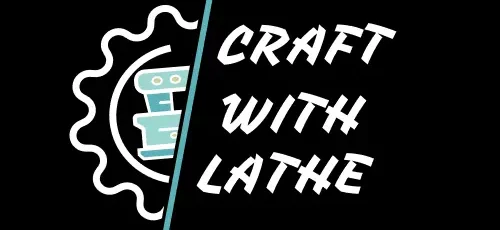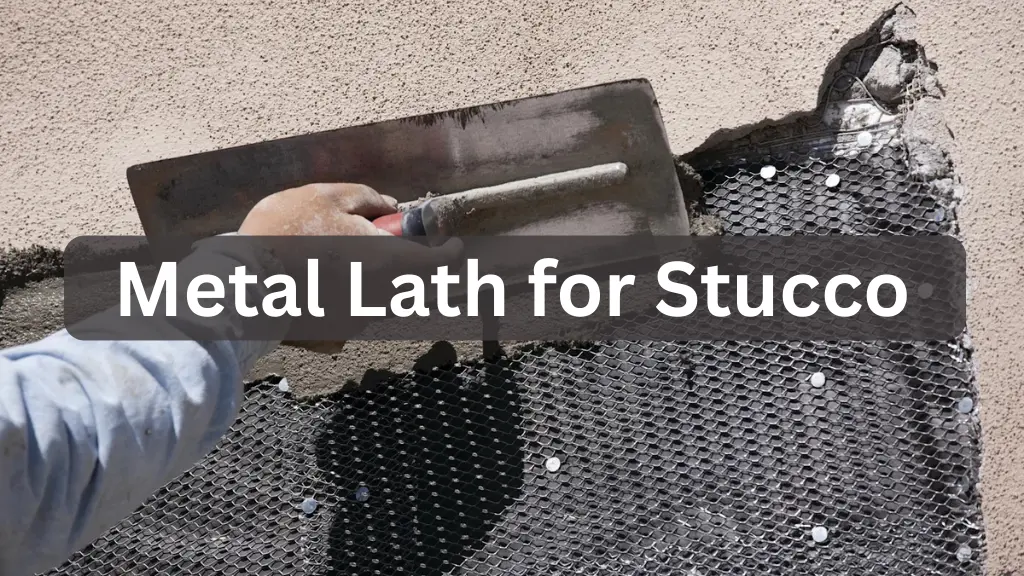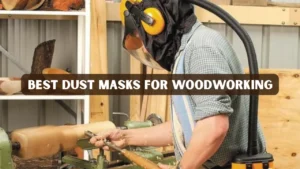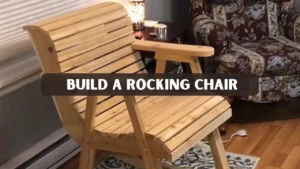Stucco has been used for centuries as a durable and attractive exterior finish. Modern construction relies heavily on support systems that allow stucco to bond correctly, stay in place, and resist cracking. One of the most important components in this process is metal lath for stucco.
This guide explores everything you need to know about metal lath, from its purpose and types to installation methods and best practices. By the end, you will understand how metal lath for stucco works, where it is used, and why it plays a vital role in creating strong, long-lasting walls.
What is Metal Lath for Stucco?
Metal lath for stucco is a supportive framework made of thin sheets or wires of metal that are formed into patterns such as mesh or expanded metal. It acts as a base that allows stucco to adhere securely while adding reinforcement. Without this base, stucco applied to smooth or uneven surfaces would be prone to sliding, cracking, or detaching.
When stucco is applied to metal lath, the material flows into the openings of the mesh and locks in place once it dries. This mechanical bond is what makes the system strong. The lath also provides a degree of flexibility, which helps resist cracking caused by temperature changes, settling, or vibrations in the structure.
Where is Metal Lath Used?
Metal lath for stucco is not limited to a single type of project. Builders, contractors, and homeowners rely on it for its strength and flexibility. Its ability to support stucco makes it valuable across many settings. From homes to commercial structures, it ensures a reliable and lasting finish.
-
Residential Construction
In residential projects, metal lath is widely applied to exterior walls for stucco finishes. It also strengthens interior walls and ceilings where a decorative surface is required. Homeowners appreciate its ability to hold stucco securely over time. This makes it a dependable choice for both new builds and renovations.
-
Commercial Buildings
Commercial spaces such as hotels, offices, and shopping centers often require durable finishes. Metal lath helps stucco adhere properly to large surfaces on these structures. It supports multi-story buildings where strength and stability are critical. Businesses benefit from its reliability and long-lasting performance.
-
Renovation and Repair
Older buildings often need reinforcement before new finishes are applied. Metal lath is added to weak areas to create a firm surface for fresh stucco. It ensures proper bonding with the existing structure for a smooth repair. This makes it an essential material for restoring and modernizing aging spaces.
-
Outdoor Structures
Outdoor designs also benefit from metal lath as a support base. Garden walls, fences, and exterior fireplaces often rely on it for strength. Decorative columns and arches built outdoors are more secure with lath reinforcement. Because stucco resists weather, the lath ensures lasting protection in harsh conditions.
What are the Different Types of Metal Lath for Stucco?
Different stucco projects require different types of lath, and knowing these variations helps ensure proper installation. Each type is designed to meet specific needs such as strength, flexibility, and weather protection. By understanding the unique qualities of each option, you can make a more informed decision. Choosing the right lath also improves durability and finish quality in stucco applications.
-
Expanded Metal Lath
Expanded metal lath is the most common type used in stucco work. It is made by slitting and stretching metal sheets to form diamond-shaped openings. This design provides strength, durability, and good bonding for stucco layers. Because it is easy to handle and widely available, it is used in both residential and commercial projects.
-
Woven Wire Lath
Woven wire lath is created by weaving thin metal wires together in a grid-like pattern. This design makes it flexible and easier to install on curved or irregular surfaces. It is commonly used in projects that require shaping stucco around arches or rounded structures. The adaptability of woven wire lath makes it a great option for creative architectural finishes.
-
Welded Wire Lath
Welded wire lath is made by welding metal wires at their intersections to form a rigid mesh. This construction provides excellent strength and stability, especially for larger wall sections. It is often chosen for projects where extra reinforcement is required to support heavy stucco layers. Welded wire lath is durable and ensures a strong base for long-lasting finishes.
-
Self-Furring Lath
Self-furring lath is designed with small dimples or ridges across its surface. These raised sections hold the lath slightly away from the base wall, creating space for stucco to flow behind it. This allows for a stronger mechanical bond and improves the overall adhesion of the material. It is especially useful when extra bonding strength is needed in a project.
-
Paper-Backed Lath
Paper-backed lath combines a layer of metal mesh with an attached sheet of building paper. The paper acts as a moisture barrier, protecting the wall structure from water damage. This design also makes installation easier since it eliminates the need for a separate weatherproofing layer. Contractors often prefer it for time-saving and added protection benefits.
Each type of metal lath offers unique advantages depending on the project requirements. Expanded and welded wire lath are ideal for strength and reinforcement. Woven wire lath is better for flexibility on curved surfaces, while self-furring and paper-backed options add efficiency and moisture protection. The right choice depends on design, climate, and budget needs.
How to Attach Metal Lath for Stucco?
Correct installation is crucial to ensure that stucco adheres properly.
Tools and Materials Needed
- Metal lath sheets or rolls
- Galvanized nails, screws, or staples
- Wire cutters or tin snips
- Hammer or screw gun
- Utility knife
- Measuring tape
- Weather-resistant barrier (if not using paper-backed lath)
Step-by-Step Guide to Installing Metal Lath for Stucco
Proper installation of metal lath ensures that stucco adheres well and lasts for many years. Following a structured step-by-step approach prevents errors and improves the finish quality. Each step focuses on preparation, placement, and secure fastening. Attention to detail is crucial for a strong and durable surface.
Step 1: Prepare the Surface
Begin by cleaning the wall or surface where the lath will be attached. Remove any dust, dirt, or loose material that could interfere with adhesion. If necessary, install a weather-resistant barrier for moisture protection. Ensuring a clean, dry surface provides a stable foundation for the metal lath.
Step 2: Measure and Mark
Use a measuring tape to determine the placement of each lath sheet or roll. Mark guidelines on the wall to maintain straight, evenly spaced rows. Accurate measurements prevent gaps and overlaps that can weaken the structure. Proper marking also speeds up installation and ensures a professional result.
Step 3: Cut the Lath
Trim the lath sheets or rolls to fit the wall dimensions using wire cutters or tin snips. Cut carefully around corners, windows, doors, and other obstacles. Proper trimming ensures a tight and precise fit without deforming the mesh. This step is important for creating a smooth and even stucco surface.
Step 4: Attach the Lath
Position the lath against the wall and secure it using galvanized nails, screws, or staples. Space fasteners evenly to maintain stability and prevent movement. Use a hammer or screw gun to ensure they are flush with the lath surface. Proper attachment is critical for long-lasting stucco adhesion.
Step 5: Overlap Sheets
When using multiple sheets, overlap edges according to manufacturer guidelines, usually by at least one inch. Overlapping prevents gaps and creates a continuous surface for stucco application. Ensure all overlaps are secure and properly fastened. This step improves the wall’s strength and durability.
Step 6: Check for Gaps and Alignment
Inspect the installed lath to ensure there are no loose areas or misaligned sections. Fill any gaps with additional strips or fasteners as needed. Check that the lath lies flat against the wall and follows your marked guidelines. Proper alignment is essential for a smooth finish and even stucco finish.
Step 7: Apply Stucco
Once the lath is securely in place, you can begin applying the scratch coat of stucco. Ensure the stucco fully penetrates the openings in the lath to create a strong mechanical bond. Follow manufacturer instructions for layering and curing times. Proper application guarantees adhesion and prevents future cracking.
Safety Tips for Installing Metal Lath and Stucco
Working with metal lath and stucco involves sharp tools, heavy materials, and potentially hazardous surfaces. Following safety precautions helps prevent injuries and ensures a smooth workflow. Wearing protective gear and using proper techniques is essential for both professionals and DIYers. Safety should always be the first priority on any project.
-
Personal Protective Equipment (PPE)
Always wear safety glasses or a face shield to protect your eyes from flying metal shards or stucco particles. Gloves should be worn when handling metal lath to prevent cuts, but remove them when operating power tools to avoid entanglement. Long sleeves, pants, and close-fitting clothing help protect the skin. Proper footwear with non-slip soles prevents slips on wet or uneven surfaces.
-
Tool Safety
Ensure all cutting tools, hammers, screw guns, and utility knives are in good condition before starting. Use wire cutters or tin snips carefully to avoid sudden slips. Keep fingers and hands away from cutting edges. Follow manufacturer instructions when operating power tools to prevent accidents.
-
Ladder and Surface Safety
When working on walls or elevated surfaces, secure ladders on a stable base. Never overreach or lean dangerously while holding tools or materials. Use scaffolding if needed for higher walls to maintain balance and stability. Keeping your workspace organized reduces tripping hazards.
-
Handling Materials
Metal lath sheets and rolls can be sharp and heavy. Always lift with proper technique to avoid back injuries. Store sheets flat or upright in a safe area to prevent accidental tipping. When cutting or moving lath, communicate with team members to avoid collisions.
-
Stucco Application Safety
Wear a dust mask when mixing dry stucco to avoid inhaling fine particles. Avoid skin contact with wet stucco, as it can cause irritation or burns. Clean tools and surfaces immediately to prevent buildup and slipping hazards. Follow manufacturer instructions for mixing, applying, and curing stucco safely.
Benefits of Using Metal Lath for Stucco
Metal lath is a critical component in stucco systems, providing strength, stability, and long-lasting performance. Its use ensures that stucco adheres properly and withstands both environmental and mechanical stresses. Whether for residential or commercial projects, metal lath enhances the quality of the finish. Understanding its benefits helps builders and homeowners appreciate its value in construction.
1. Durability
Metal lath creates a strong support framework for stucco, allowing it to withstand daily wear and tear. It reinforces walls against impact and reduces the risk of material failure. The rigid mesh ensures even distribution of weight and pressure across the surface. This durability extends the lifespan of stucco finishes and minimizes maintenance needs.
2.Crack Resistance
The mesh pattern of metal lath helps distribute stress evenly across the stucco layer. This reduces the likelihood of cracks forming due to settling or temperature changes. Even in high-traffic or high-stress areas, lath maintains the integrity of the surface. Using metal lath improves structural performance and preserves aesthetic appeal over time.
3. Adhesion
Stucco grips the openings in the metal lath, forming a strong mechanical bond. This prevents peeling, sagging, or detachment of the finish. The consistent adhesion ensures that the stucco remains securely attached to the wall. Properly installed lath creates a reliable base for both scratch and finish coats.
4. Weather Protection
With correct installation, metal lath supports a stucco finish that resists rain, wind, and temperature fluctuations. It helps prevent moisture infiltration that can damage underlying structures. Lath provides an extra layer of stability against harsh weather conditions. This protection enhances both the durability and appearance of the exterior surface.
5. Versatility
Metal lath is suitable for a wide variety of surfaces, including flat walls, curves, and complex architectural features. Its flexibility allows builders to create intricate designs without compromising strength. This makes it ideal for decorative finishes and specialty applications. Versatility ensures consistent performance across different project types.
6. Cost Efficiency
Although metal lath adds to initial construction costs, it reduces long-term repair and maintenance expenses. A well-reinforced stucco system is less likely to crack or fail, saving money on repairs. The added durability and reliability make it a cost-effective solution over the life of the building. Investing in lath improves overall construction value.
Common Problems with Metal Lath in Stucco Applications
Even though metal lath is effective, issues can occur if it is not installed correctly.
1. Rust and Corrosion
If you use non-galvanized lath or if moisture barriers fail, the metal can rust over time, weakening the bond and causing stains on the stucco surface.
2. Poor Installation
Improper fastening, insufficient overlap, or inadequate coverage can compromise the stucco’s integrity, leading to cracks and potential detachment over time.
3. Inadequate Fastening
Using too few nails or screws can leave the lath loose, causing it to shift when applying stucco. This movement prevents the stucco from forming a strong bond with the lath, increasing the risk of cracks.
4. Troubleshooting
- Always use galvanized or stainless steel lath in exterior applications.
- Double check overlaps and fastener spacing.
- Inspect weather barriers to ensure they are intact before applying stucco.
Real-World Case Study
A contractor in Arizona worked on a large residential project where homeowners requested a traditional stucco finish. The team used galvanized expanded metal lath combined with a double layer of weather-resistant paper. The installation followed proper fastening guidelines with 6-inch spacing on studs.
After applying a scratch coat, brown coat, and finish coat, the result was a smooth and durable exterior. Several years later, the homeowners reported minimal maintenance requirements and no visible cracking. This real-world example highlights how correct installation of metal lath for stucco can deliver long-lasting results even in hot and dry climates.
Expert Tips for Choosing the Right Metal Lath
When selecting metal lath, consider these expert recommendations.
- Climate: In humid or coastal areas, choose galvanized or stainless steel lath to resist corrosion.
- Project Type: For large commercial projects, welded wire lath provides superior strength. For residential or curved designs, woven wire lath may be better.
- Budget: Expanded metal lath is widely available and affordable.
- Moisture Control: Consider paper-backed lath if you want to save time and reduce installation steps.
- Reputation of Supplier: Buy from trusted suppliers that provide quality-certified products.
Conclusion
Metal lath for stucco is a critical component that ensures durability, strength, and aesthetic quality. It provides the framework that allows stucco to adhere, resist cracking, and withstand environmental challenges. By choosing the right type of lath and installing it correctly, builders and homeowners can achieve beautiful and long-lasting results.
Whether you are working on a new construction project, repairing an old wall, or creating a decorative outdoor feature, metal lath offers the reliability and support that stucco requires.
FAQs
What is the best metal lath for stucco installation?
Many consider expanded metal lath the best overall option because it offers strength, wide availability, and suitability for most projects.
How long does metal lath last in stucco walls?
With proper installation and moisture protection, metal lath can last decades, often outlasting the life of the stucco itself.
Can metal lath be reused?
Do not reuse metal lath. Removing it can bend, rust, or weaken it, making it unreliable for new installations.
Is galvanized lath better for outdoor use?
What thickness of metal lath is recommended?
Most stucco applications use 2.5 or 3.4 pounds per square yard lath. Heavier lath provides greater strength but may be harder to handle.




